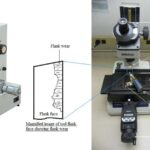IGCSE Biology 20 Views 1 Answers
Sourav PanLv 9November 14, 2024
State the functions of xylem and phloem: (a) xylem – transport of water and mineral ions, and support (b) phloem – transport of sucrose and amino acids
State the functions of xylem and phloem: (a) xylem – transport of water and mineral ions, and support (b) phloem – transport of sucrose and amino acids
Please login to save the post
Please login to submit an answer.
Sourav PanLv 9May 15, 2025
Xylem and phloem are two types of vascular tissues in plants that serve essential functions in the transport of nutrients and support. Here’s a detailed overview of their roles:
(a) Xylem
- Transport of Water and Mineral Ions:
- The primary function of xylem is to transport water and dissolved mineral ions from the roots to the rest of the plant. This process occurs through a combination of capillary action, root pressure, and transpiration pull.
- Water is absorbed by the roots from the soil and moves upward through the xylem vessels to reach leaves and other parts of the plant, where it is used for photosynthesis and other metabolic processes.
- Support:
- Xylem also provides structural support to the plant. The walls of xylem vessels are thickened with lignin, which strengthens them and helps maintain the plant’s upright position. This rigidity is crucial for supporting tall plants and trees, allowing them to grow towards sunlight.
(b) Phloem
- Transport of Sucrose and Amino Acids:
- The primary function of phloem is to transport organic nutrients, particularly sucrose (a form of sugar) and amino acids, from the leaves (where they are produced during photosynthesis) to other parts of the plant, including stems, roots, and developing fruits.
- This transport occurs through a process called translocation, which relies on pressure differences generated by active loading and unloading of sugars into and out of phloem sieve tubes.
0
0 likes
- Share on Facebook
- Share on Twitter
- Share on LinkedIn
0 found this helpful out of 0 votes
Helpful: 0%
Helpful: 0%
Was this page helpful?




